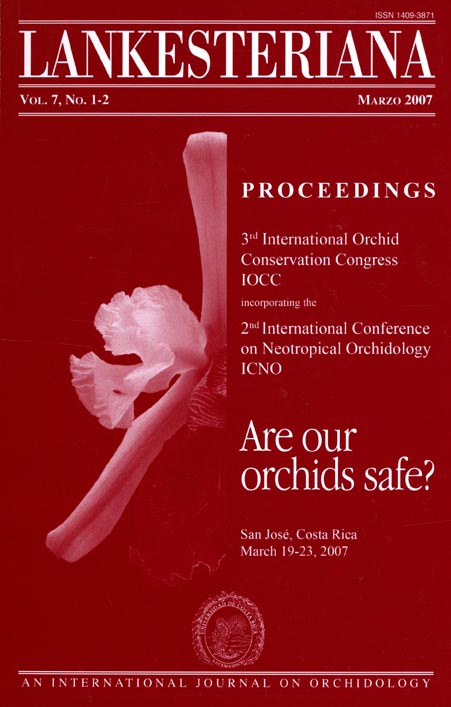Orchids’ micropropagation for to the sustainable management of native species from Parque Nacional y Área Natural de Manejo Integrado Cotapata (PN-ANMI Cotapata), La Paz-Bolivia
DOI:
https://doi.org/10.15517/lank.v7i1-2.19524Keywords:
orchids, in vitro germination, micropropagation, Yungas Mountain Forest, culture media, conservationAbstract
Bolivia is one of eleven countries with the highest biodiversity in earth, due to its variety of ecological belts, ecotones, biogeographic affinities, heterogenic habitats and total species number (Ibish 1996). Concerning to flora, approximately 20,000 angiosperms species have been registered (Beck 1998) and 1,500 of them are included in the Orchidaceae family. The region with the highest orchid diversity corresponds to the Yungas Mountain Forest which covers 4% of the national extension and has 60% of the species, being 80% of them endemic of the zone (Vásquez, 2004).
Downloads
Downloads
Published
How to Cite
Issue
Section
License
According to the Open Access policy promoted by the University of Costa Rica, all the papers published by Lankesteriana are licensed under the Creative Commons copyright and can be downloaded free of charge. The journal holds copyright and publishing rights under the CC BY-NC-ND 3.0 CR license.
Before the publication of the materials submitted by the author(s) in LANKESTERIANA, the author(s) hereby assign all rights in the article to the Lankester Botanical Garden.





